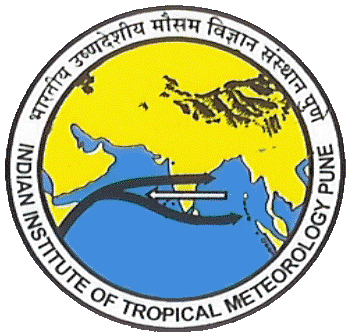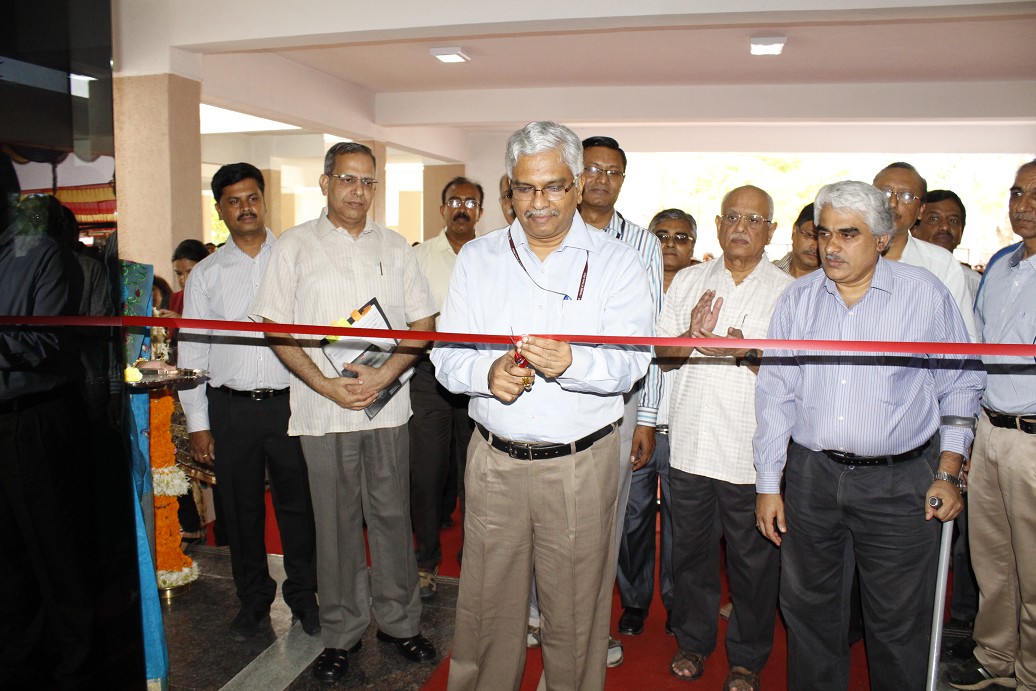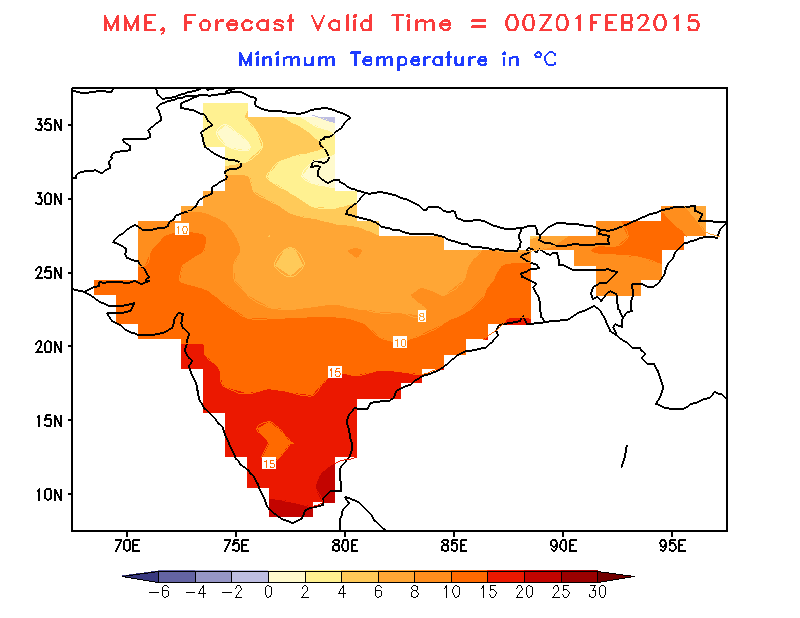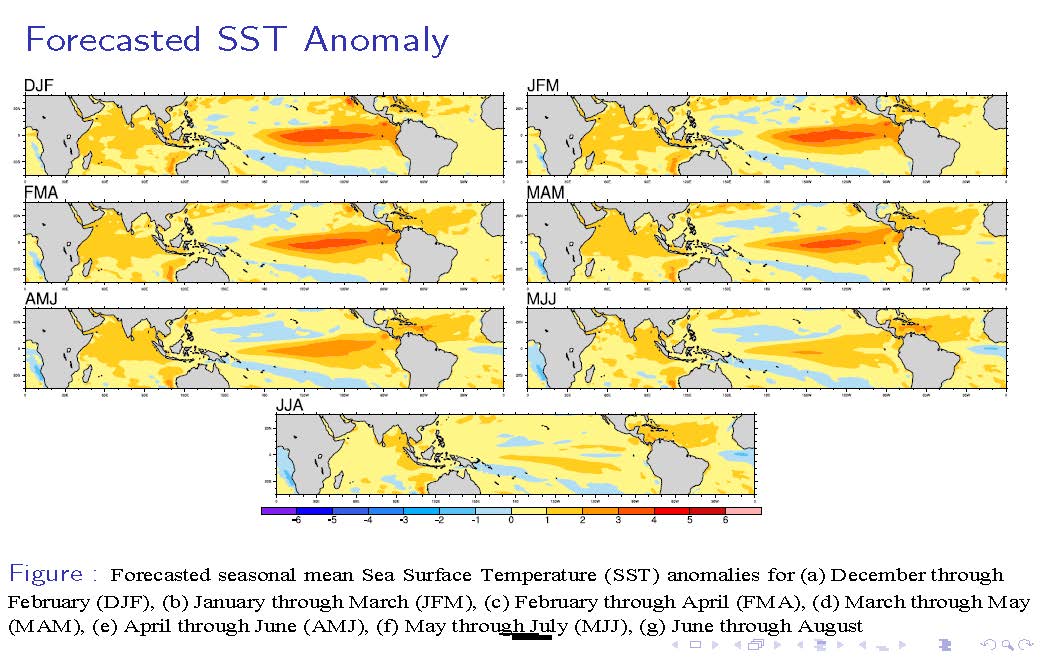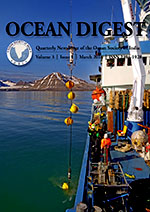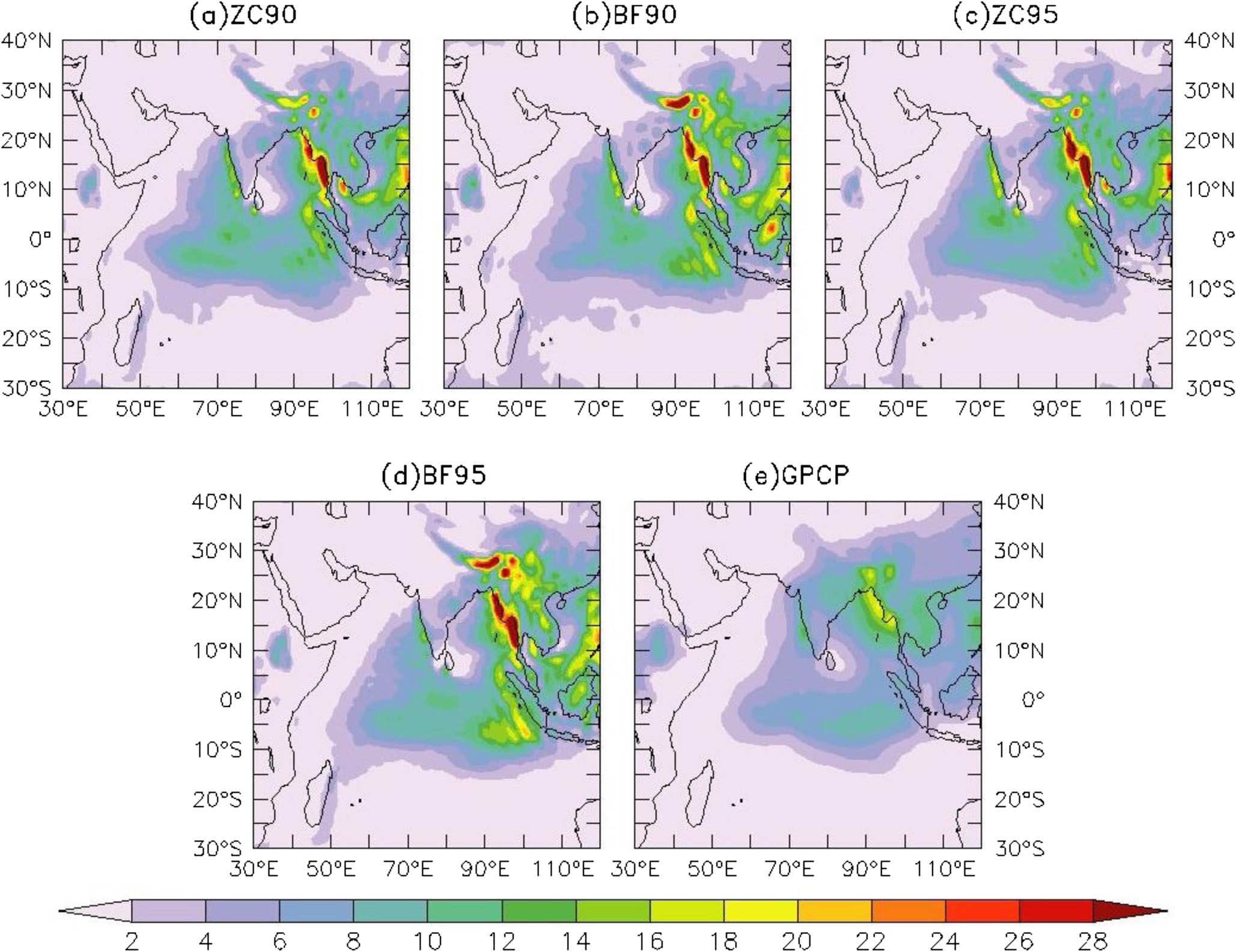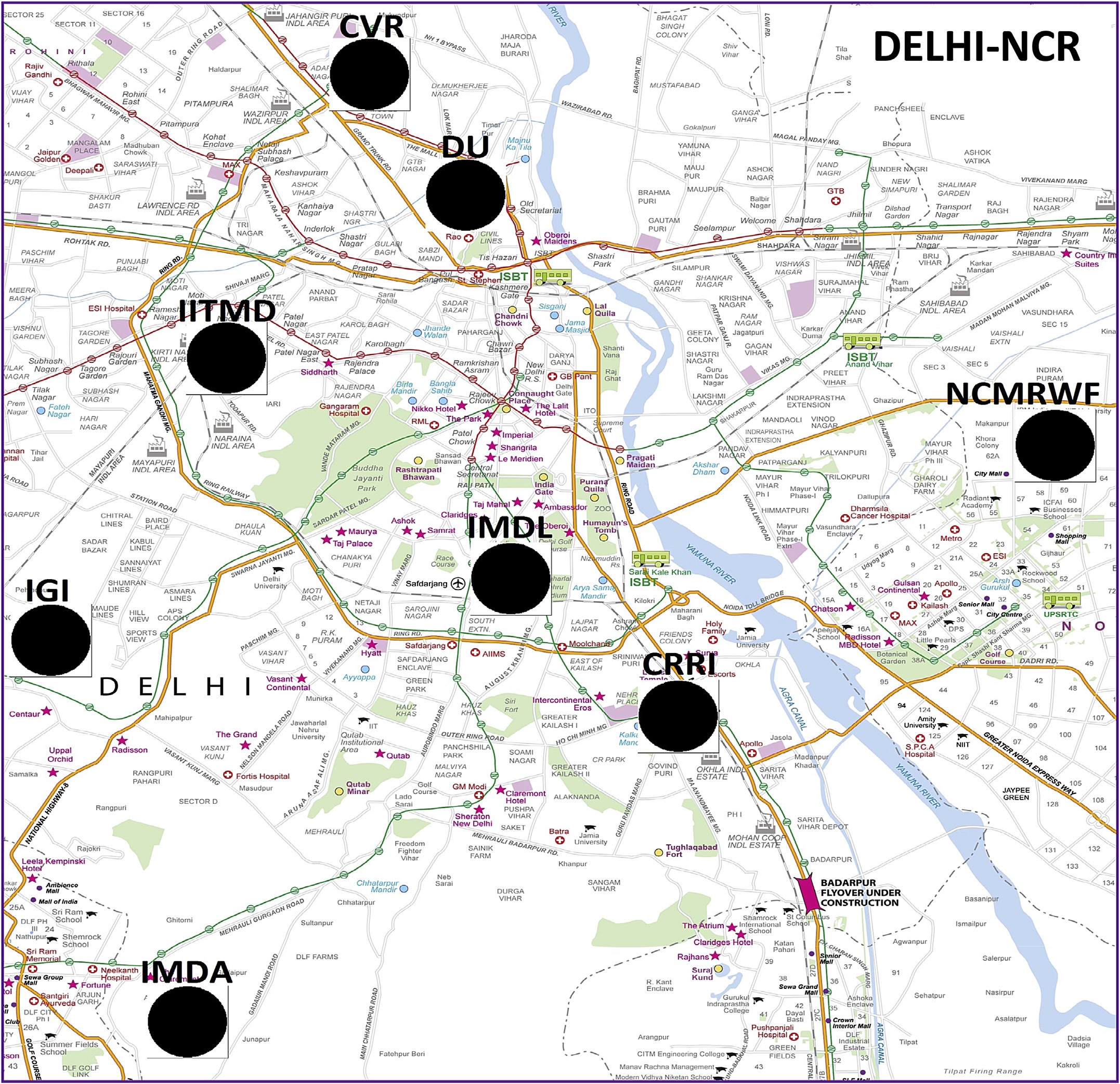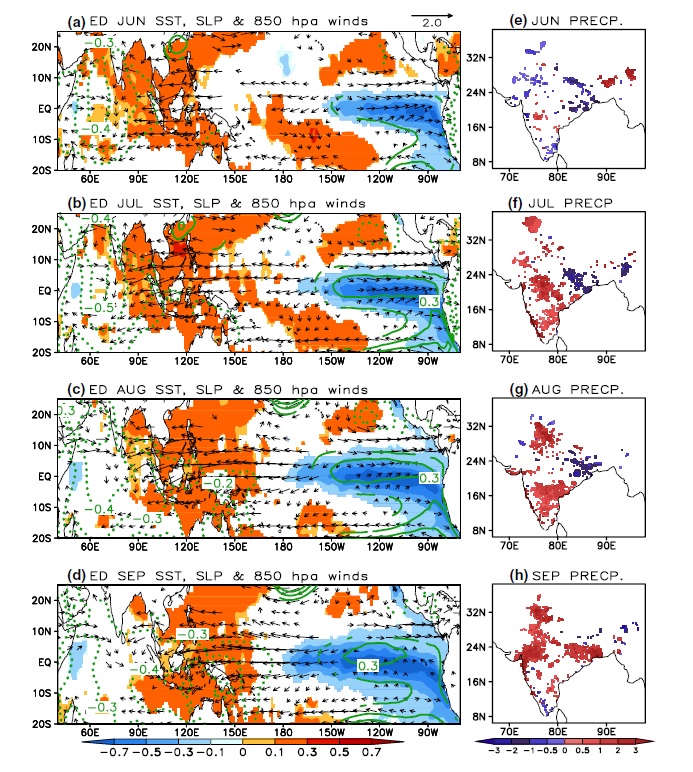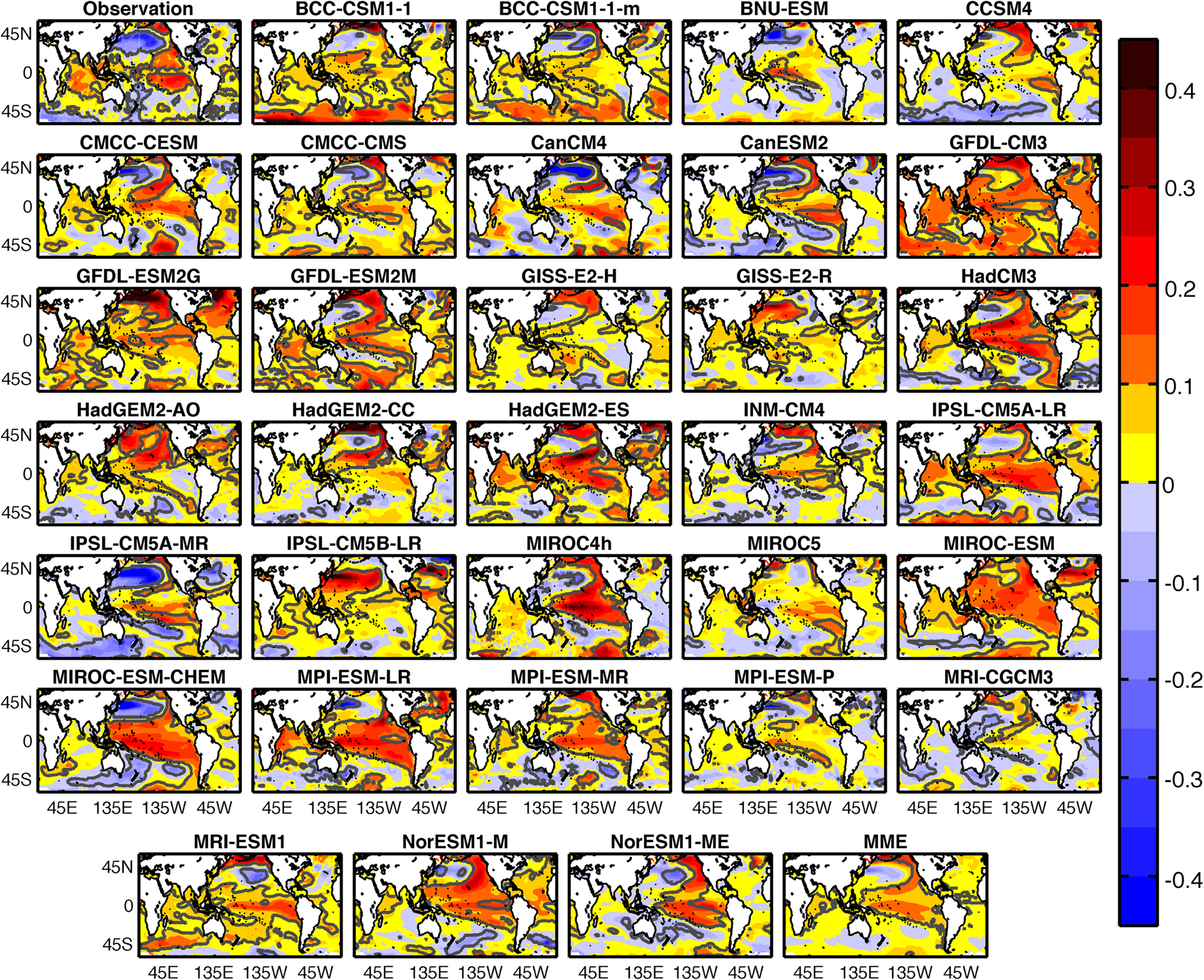IITM Publication Highlights
An unidentified heavy rainfall station 'Tamhini' in the northern region of Western Ghats of India
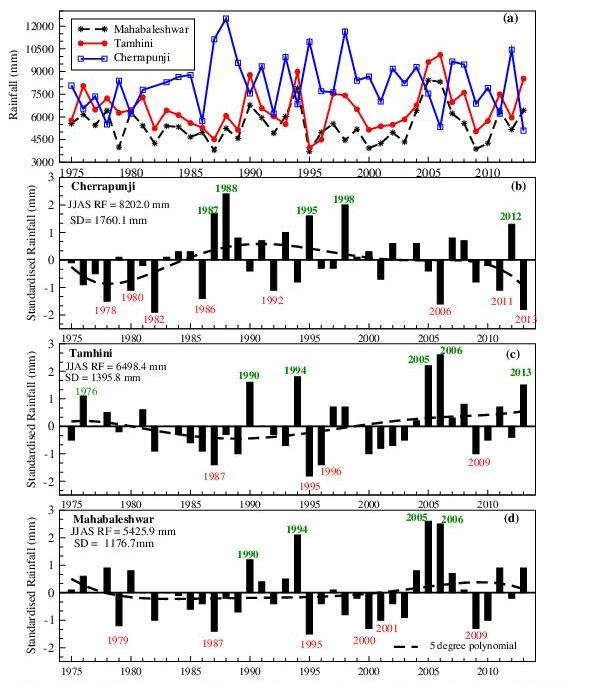 |
Tamhini, a station located in the leeward side of northern parts of Western Ghats (WG) of India, receives a mean-monsoon rainfall of 6498.4 mm. The station has no record of any meteorological agencies in India. Therefore, the existence of such heavy rainfall (HR) station remained unknown. The analysis showed that in spite of lying on the leeward side of main WG, Tamhini's monsoon rainfall is more than that of stations lying on the windward side of the WG. This is in contrast to widely accepted view that rainfall is lower on the leeward side of mountains. This is in contrast to widely accepted view that rainfall is lower on the leeward side of mountains. Tamhini rainfall ranks number one in the north Peninsula and fifth in India. It is more compared to Cherrapunji monsoon rainfall (second highest rainfall-receiving station in India) in 8 non-El Nino years. It has the highest 1-day (695 mm) and 3-day (1055 mm) rainfalls in the Peninsular WG region.
Read more...
(D. R. Kothawale, N. R. Despande, S. G. Narkhedkar and J. R. Kulkarni, International Journal of Climatology, Online, June 2016) |
Aerosol indirect effects from ground-based retrievals over the rain shadow region in Indian subcontinent
|
Aerosol induced changes in cloud microphysical and radiative properties have been studied for the first time using ground-based and airborne observations over a semi-arid, rain shadow region. High Aerosol Indirect Effect (AIE) was observed over the rain shadow region, which can also be one of the causative factors for rainfall deficiency over this region. It is also observed that AIE is highly variable with CCN super saturation along with available cloud LWP.
Read more...
(Harikishan, G., Padmakumari B., Maheskumar R. S., Pandithurai G., Min Q. L., Jr. of Geophy. Res., Feb. 2016) |
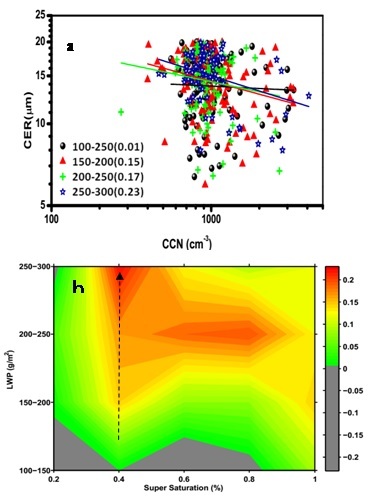
|
On the relationship between east equatorial Atlantic SST and ISM through Eurasian wave
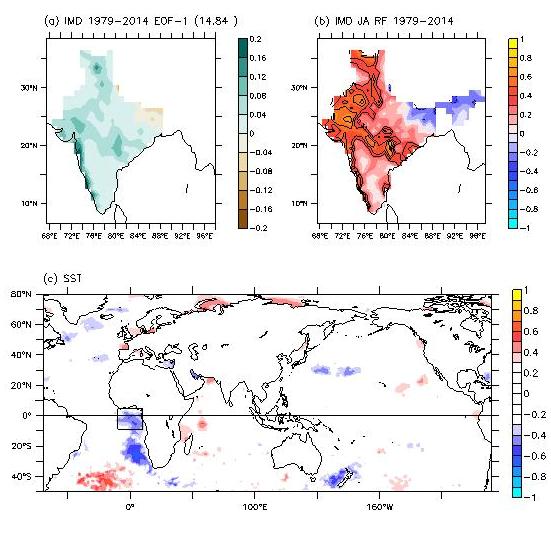 |
The north-west (NW) and central India summer rainfall is anti-correlated with east-equatorial Atlantic SST (EEASST). The negative EEASST anomaly weakens the inter-tropical convergence zone over Atlantic and west equatorial Africa which generates stationary wave meridionally with anomalous positive GPH over NW Europe. The anomalous positive GPH over NW Europe acts as center of action for the propagation of a Rossby wave train to NW India via Europe consisting of anomalous high over NW of India. This intensifies the Tibetan High westward which reinforces the outbreak of monsoon activity. Read more... (Yadav R.K., Climate Dynamics, Online, March 2016) |
